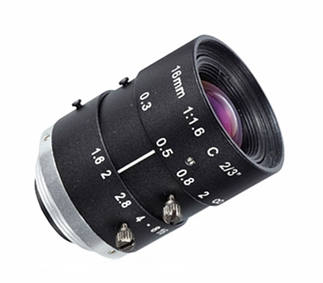What factors affect industrial lens imaging?
Machine vision has been favored by many industries, such as industrial production and scientific research, for its advantages in performance and imaging. However, clear and accurate imaging effect of machine vision is also inseparable from the imaging technology of industrial lens. It's reported that factors affecting the imaging effect are the lens, aperture and depth of field. At present, what are mostly focused are basically two technical parameters, namely the aspherical lens and large depth of field. This paper mainly analyzes the effect of above two technologies on the imaging effect of machine vision.
Technical parameters of aspherical lens
For lens, clarity of the whole picture is the most important indicator, so we emphasizes the whole picture here. Lens can be divided into two kinds: spherical lens and aspherical lens. Due to fixed spherical aberration, astigmatism and field curvature, pictures taken by the spherical industrial lens have poor clarity, particularly, the image edge may even become virtual. By comparison, aspherical lens improves the limitations of spherical lenses caused by fixed spherical aberration, effectively improves the clarity of image edges, thus greatly avoiding the occurrence of phase ambiguity.
Imaging effect of the aspherical industrial lens is undoubtedly, however, the cost is also rather high, which is also the main reason restraining the popularity of aspherical lens in industrial applications. As aspherical lens can obtain good images, many customers use it, and the aspherical lens market is still an important technical index affecting the imaging effect.
Technical parameters for depth of field
Depth of field refers to the distance that the camera can clearly form images. That means, in order to get clear pictures, the lens shall have a proper depth of field. The larger the depth of field is, the larger clear range of images, the remote scenery can still be seen clearly after image magnification. Large depth of field can enhance the pictures' clarity and increase clear area of pictures, so this technical parameters can really affect the imaging effect. When we choose a industrial camera lens with large depth of field, comparisons can be made on the pictures' clarity after magnification.
The depth of field is not an independent parameter, actually, it's related with focal distance, aperture, shooting distance and other parameters. For example, aperture is inversely proportional to the depth of field, the larger the aperture, the smaller the depth of field is. The smaller the aperture, the larger the depth of field is. Focal distance is also inversely proportional to the depth of field, the longer the focal distance, the smaller the depth of field is. The shorter the focal distance, the larger the depth of field is. Shooting distance is proportional to the depth of field, the longer the shooting distance, the larger the depth of field is. The shorter the shooting distance, the smaller the depth of field is.
Other technical parameters
Apart from above two technical parameters, other factors also affect the imaging effect of industrial lenses. For example, large aperture has a great influence on the contrast of the pictures. If the aperture is not large enough, pictures will look dim in dim light and Hot Pixels increase, image quality will deteriorate seriously.
Purchase a fixed focus C-mount industrial camera lens from ATO.com, 1/1.8" 6mm lens, 2/3" 16mm lens, 2/3" 35mm lens. GigE vison industrial cameras are available here.

